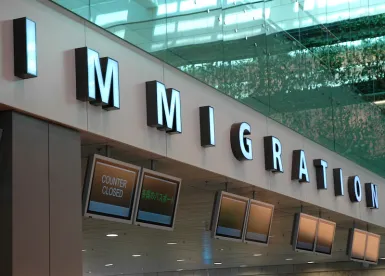Representative Zoe Lofgren, Ranking Member of the House Judiciary Committee, Subcommittee on Immigration and Border Security, and Representative Luis Gutiérrez introduced H.R. 3370, the Entrepreneurial Business Creating Jobs Act of 2015. This is the third bill introduced in 114th Congress that focuses on reauthorizing the EB-5 program.
In January 2015, Representatives Mark Amodei (R-NV) and Jared Polis (D-CO), introduced H.R. 616, the American Entrepreneurship and Investment Act. In June 2015, The American Job Creation and Investment Promotion Reform Act, S. 1501, was introduced in the Senate by Senate Judiciary Committee Chairman Charles Grassley (R- IA) and Senate Judiciary Committee Ranking Member Patrick Leahy (D-VT). What differences and similarities are afforded by these three bills, and how does the latest bill, H.R. 3370 change the landscape and attitude towards the EB-5 program? A comparison of all three bills and its key proposals can be found here.
The bill introduced by Representatives Amodei and Polis seeks to permanently authorize the EB-5 program and provides for much-needed reforms, from the perspectives of the Regional Centers, investors, and the United States Citizenship and Immigration Services (USCIS). Some of the key provisions of the bill include eliminating derivatives from the 10,000 numerical limit for the EB-5 visa category so that the amount of total investment pouring into the country can be maximized and keeping TEA designation authority to the State. The bill also proposes to shorten processing times for the adjudication process. In addition, S. 1501 addresses security concerns by including provisions that will strengthen the integrity of the program and require Regional Centers to have accountability for their actions.
The Senate bill, S.1501, is a much more detailed bill that seeks to reform all aspects of the program. The provisions, if enacted, would change the job creation methodology, the entity that determines targeted employment area designations, and source of funds requirements for the investor. In addition, S.1501 focuses on a number of integrity measures that requires strict compliance from the Regional Center, shifting almost all liability to them. These include an annual certified compliance statement, site visits, compliance with security measures, and background checks. Any violation could result in termination of the Regional Center, as determined by the unreviewable discretion of the DHS. Moreover, S.1501 includes various transparency provisions to ensure that undue influence is eliminated and that there is no preferential treatment given by the USCIS. All the measures proposed by S.1501, while conceptually are much needed, do not work practically in the EB-5 realm.
There is no doubt that the introduction of both H.R. 616 and S.1501 show the impact of the EB-5 program and just how important this job-creating, investment-yielding program is to the United States and its economic growth. Numbers alone show that between 2005 and 2013, the EB-5 program generated $5.2 billion dollars in foreign direct investment into the United States. It is true that there have been some negative media on the EB-5 program as of late, both regarding the Department of Homeland Security and Regional Centers, but the EB-5 program is a positive program that stimulates economic growth and allows projects and industries to grow, including the rebuild of the Pennsylvania Turnpike and developments of charter schools, Hudson Yards in New York City, and hospitals, among countless other projects.
The bill introduced by Representatives Lofgren and Gutiérrez underscores just how important this program is to the United States. The bill is a nice hybrid and combination of H.R. 616 and S.1501 in that it focuses on the much-needed reforms for the program, while also ensuring that strengthening the integrity of the program is addressed. The bill seeks permanent reauthorization of the program and provides for allowing additional visa numbers if the 10,000 cap is reached. It also includes workable security and compliance measures for the Regional Center, along with a much more neutral platform of authority given to the DHS when faced with violations. The bill also establishes a process to ensure timely adjudication of all cases, and proposes a much more workable definition for designating TEAs.
The introduction of H.R. 3370 by two leading House Democrats shows the willingness of Representatives in the Democratic leadership to keep the program and to keep the conversation alive between the House and the Senate, and between Republicans and Democrats, leading to bipartisan support. Both Representatives are key leading supporters of immigration reform, and focusing on the EB-5 program in light of the program’s expiration indicates the urgency and importance of the keeping the EB-5 program intact. The bill has many key provisions that will be part of the discussion for reauthorization of the program by Sept. 30, 2015.




 />i
/>i


